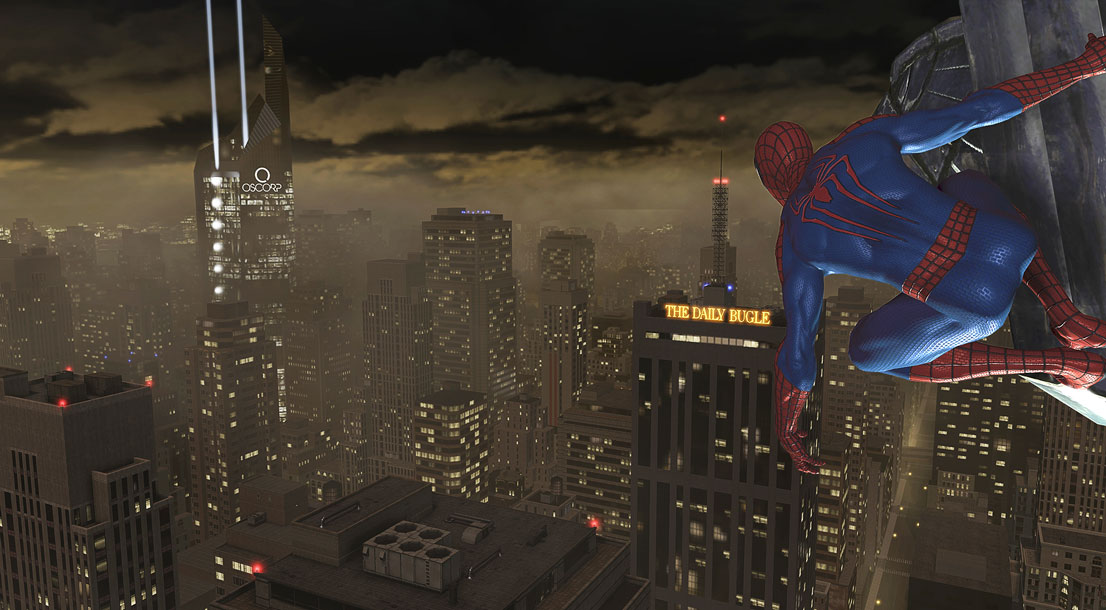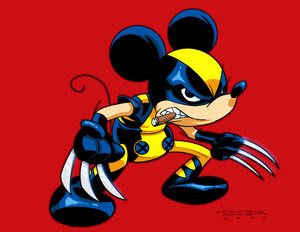I don’t often write about the day to day business of pastoring a church; I always feel like pastors writing about being pastors is a bit self-indulgent and often it boils down to a sort of ‘woe is me, my job is harder than you could imagine… if only you would do more, good Christian, you would keep me from burnout’… or my personal least-favourite, tips for how to ‘appreciate your pastor in pastor appreciation month’… blurgh…
I love my job and think it’s a privilege to be paid to tell people about Jesus and think about how our church should best shape itself in order to reach our friends, family, and neighbours. I do feel appreciated by lots of people. I’m thankful for my church family. And the answer for how to appreciate your pastor and make them feel better is probably just to turn up to church and love the people who are part of your church family with every bit of who you are — mess included…
But indulge me. Just this once (well. I can’t guarantee it’ll only be once).
Pastoring a church is actually a super hard job. One I’ve only been doing for a few years. I’m a total rookie, and most of the time I feel like I’m in over my head and that I’m making things up as I go, hoping not to hurt too many people… and unlike most rookies, I have an incredible team of people supporting me; a dad whose footsteps I’m following in, a boss who coaches and supports me, a mentor who mentors me, a team of fellow staff who shoulder all sorts of responsibilities, and a pretty great church community… even with the best human support structures in the world this job is hard, and it throws up curveball after curveball.
I’m in a little season of feeling sorry for myself and counting the cost of some of my mistakes; of decisions made, or not made, of structures adopted, but mostly just of spinning plates that have fallen from different sticks while my attention was on the balls I was juggling at the same time. Mostly it’s a season of counting the cost of simply being normal-human rather than super-human. Sometimes I wish I was a super-hero, or super-pastor. Like the ones you see on the Internet (or on TV if you watch that rubbish).
It’s easy to think that a church succeeds or fails on the shoulders of the pastor — that’s what we’re often told; it’s there in the literature in the Christian bookshops, and on Christian websites… pastors grow and shrink churches… and I suspect that for many people it’s easy to believe your own faith lives or dies on the shoulders of your pastor, because heaven forbid you need to take responsibility for your own growth, or changing how you live to be more like Jesus without someone telling you. Let me stress this is not all people.
I’m almost four years in and I’m reasonably sure my shoulders aren’t capable of bearing this load; the responsibility of growing (or shrinking) a church, or the responsibility of ‘growing’ a Christian using my own power. I’m also six years into parenting, and have three kids, and feel overwhelmed by that load… four years into dog ownership and feel like my shoulders aren’t capable of bearing that load… and just over ten years into marriage. There are a lot of loads for my shoulders to bear should I see my task in these terms. In a lifetime of being around church ministry stuff, I’ve also watched the load of pastoring metaphorically (though perhaps literally on a spiritual level, and a family level) tearing people apart, and I’m pretty determined for that not to be me, or my family.
A huge part of the battle not to be torn apart is the battle not to buy into the myth of the super-pastor.
You know the one, you probably see it on social media if you follow pastors whose official fan pages post clips of their most impassioned preaching (in their lycra-like tight preaching costume, with their slicked-back hair, telling stories about their kids)… it’s the story that the pastor has his stuff together as a family man and only ever loses it as his kids in order to have just the right story for his sermon.
It’s the story of the pastor who has been through the hero’s journey — who set out on an adventure, was broken, but has now returned, like Steve Jobs returned to Apple, to lead the solution to the church’s problems.
The myth of the super-pastor is not just the myth that the pastor’s own congregation needs the salvation that only this pastor can bring, but that the whole church needs this super-pastor. So the platform has to grow; the books have to be published, and screens have to be rolled out across the land. We’ve seen it all before. We’ll see it again. And as a pastor it’s tempting to believe it when things are going well — and to be crushed by it when they aren’t.
It certainly feels like the church needs a super-hero; not just our church (which has its own problems and is enough to leave me feeling inadequate and out of my depth). I sat at our local Westfield this afternoon with one of the guys from church, overwhelmed again by just how many people there are in our city and how many of them don’t know Jesus. People walking by our table living in their own little stories, pursuing their own goals, and identity, and ultimately worshipping something other than Jesus. I was struck, again, by our city’s need for a saviour. I was struck by just how poorly our churches are doing at reaching people.
I went to the Ashes test and the Rugby League World Cup semi-final here in Brisbane on Friday and was, cumulatively, surrounded by almost 60,000 people. The Presbyterian Church of Queensland, across the board, in Queensland, claims weekly attendance of around 7,600 people.
We’re not, by any stretch, the only show in town when it comes to preaching the Gospel in Queensland; but last year we buried more people than we baptised (175 to 152)… and our attendance grew by 289, but more than half of that growth was in a Korean Presbyterian church that ministers almost exclusively to Korean migrants, with minimal input from the denomination… apart from this (and without downplaying it) we grew by 1.7%, which is just a nudge above the rate of population growth in Queensland, which is significant because if our growth rate is smaller than the population growth rate we’re actually shrinking in real terms… and these attendance figures also double count people who attend two services on the one Sunday. We’re not talking about revival. We’re not making a ripple in the pond that is Westfield Garden City on a Sunday, or the crowd at the footy… we’re surrounded by people who need rescuing… even if they don’t know it.
It’s tempting to think we need super-pastors to do this work. People who’ll heroically overturn the status quo (that’s what heroes do), and lead a new revival (that’s what super-pastors do)… part of this temptation comes because it does seem that both these things would be great… I’m all for both of them… just not for the weight of both, or either, of them being put on the shoulders of pastors, rather than the church, or more importantly, its actual hero.
I’m not a super-pastor. But if I was… I’d be Spider-Man.
I’m a sucker for Spider-Man. I love his aesthetic; I love the puns; I love the super-hero mythos generally; and I love that at his best he limits himself to his neighbourhood. I love that he’s young, sometimes cocky, but that he finds redemption, often, in realising that he needs the help of others. The best bits of Spider-Man were captured in his recent introduction to the Marvel Cinematic Universe. In Homecoming, Marvel explored Spider-Man’s limits — especially through deliberate comparisons to Iron Man; a real super hero. It explored his desire to really count; to be someone significant, who saw his local patch as a stepping stone to the global stage, and local crime as small stuff compared to the world of the Avengers. Ultimately his Homecoming journey left him happy enough being your trademarked ‘friendly neighbourhood Spider-Man’; but not without him needing to prove himself, to prove that his shoulders could bear the weight his powers placed upon them (though ‘with great power comes great responsibility’ was implied in this expedition, not explicit). Homecoming was the story of Spider-Man truly learning his place.
There was one particular scene I loved. A vivid metaphor of the temptation to be a ‘super-pastor’… Spider-Man is on the Staten Island Ferry. He has a confrontation with the bad guy who is wielding alien weapons; and as Spider-Man seems to get the upper hand, his enemy, the Vulture, says something along the lines of ‘you have no idea what you’re playing at’, and the weapon Spider-Man has wrested from his hands goes out of control; splitting the ferry in two.
Now. For the purposes of this metaphor; imagine that the ferry is the church. A bunch of people who have been rescued from the water beneath by the boat, but then because of the rookie errors of their pastor, the church is rent in two. It starts to take on water. The people who thought they were safe, and that the pastor was looking after their journey, now face death by drowning. They’re probably worse off than they were before the pastor did anything to get them on board…
Spider-Man recognises that the church is falling apart, and because he is a super-hero, he believes it is his responsibility to save it. He, after all, has the power.
In the movie version, Spider-Man’s technologically-augmented suit calculates the path he needs to traverse through the rapidly falling apart ship, he flings himself, pirouetting like only Spidey can, between fixed points on the boat… and we get this iconic image of Spider-Man, the hero, saving the day. Holding the lives of the passengers in his hands… bearing the weight of the world on his shoulders. The sort of image a super-pastor might post of themselves on social media… probably while preaching… probably in the same cruciform pose (for the record, I hate photos of pastors preaching, but every time a photo is posted of me it looks like I’m preparing for take off).
This is the iconic image of the movie Homecoming. Spider-Man. Arms outstretched. Saving the world… or the ferry in the sort of cruciform pose you might expect from Australia’s St Andrews Cross Spider. Just for a moment it looks like Spider-Man manages to pull it all together.
It looks like Spider-Man has saved the day… and sometimes super-hero pastors can feel like this. Job done. Crisis averted. Lives saved… all on your shoulders…
There’s going to be a slight spoiler after this picture.

This looks like an iconic image; a picture of heroism, but it’s actually a picture of Spider-Man’s failure.
Just when it looks like Super-Pastor… I mean Spider-Man has pulled everything together the voice in his suit congratulates him on a great job… he’s been, it says, “98% successful”… it dawns on him that 98% is not successful enough just as the whole thing falls apart.
He has failed.
His shoulders were not broad enough; he was all responsibility not enough power, and now everything comes crashing down. And in the real life version of this, this is where the pastor has an identity crisis and either starts blaming people for getting in the way, or shouldering too much of the blame for failing… and both are deadly.
This, at least, was how I felt when watching this scene, and its resolution. I’ve been feeling like church is a ship that if not torn apart by alien lasers, at least has a lot of holes that always need to be plugged. It’s always taking on water. People are always at risk of drowning… and too often I, and they, expect Super-Pastor to save them. The thing is… if this ship went down I’m not sure that Spider-Man actually survives anyway; his fate is tied to the fate of the passengers.
So often in the last few years I’ve bought into one of two ‘super-pastor’ narratives, both when things are going well (and it’s easy to believe the hype), and when things are hard: one, that I’m the saviour our church needs; that my shoulders will hold our church together, carry it, plug the holes, and bind up the broken… most often, but not always, this one comes from a sort of internal monologue, but it’s even more unhelpful when it comes from other people.
The second narrative is that the boat falling apart is my fault; if only I’d preached richer, deeper, clearer, funnier sermons, or if only I’d made better decisions, if only I’d been less stressed out because of parenting toddlers, or less distracted by the countless other things that land on my lap, or that I give attention to… if only I’d been better at my job, then people wouldn’t feel like they’re drowning, wouldn’t be falling overboard, or would be growing in the sort of maturity that’d have them strapping on an Avengers uniform and running into the fray as super-heroes too. This one also comes from a certain internal monologue, but is also, I suspect, part of the subtext of many decisions (not all) to jump ship. We’re so geared, in our consumer culture where the cult of personality rules, to pick a church based on the pastor, or ‘the preaching’; and to build our assessment of whether a church is sinking or swimming based on how well the super-hero is delivering… or perhaps I’m so geared, as a pastor, to think in those terms… that any time it feels like something is falling apart it’s because I’ve only been 98% successful, or worse. Then we’re geared to think that it’s our job to be the hero, if not the pastor’s job, that somehow we need to make up what is lacking in ourselves, or tackle the vastness of the mission, by shouldering more of the world’s problems.
But I am not Spider-Man. I’m not a super-pastor. I have no desire to build a platform, or to carry the weight of the world (or just my church) on my shoulders. I’m also not a super-parent or super-husband; but part of what I’m learning good parenting looks like is letting my kids take responsibility for the things they can take responsibility for, but also letting them let go of what they aren’t (which is most things).
Because while I’m not the saviour (and am a naughty boy); there is another whose shoulders are big enough; one whose outstretched arms were not only 98% successful (and had they been, it would’ve doomed us all). And it’s not Iron Man… but the real cruciform saviour. He’s the one holding our church together; he’s the one I need to look at when I’m tempted to believe any super-pastor ideas (that I am one, or am failing to be one), whether from others or myself… and he’s the one I’m to point to. I love the way Hebrews talks about this both in the first chapter, and in chapter 10, in these words, first talking about ‘heroes’ — priests — those who stand between us and God — who aren’t even 98% successful… and then Jesus, the true super-pastor. The one who stood, but then sat down, enemies destroyed. Mission accomplished. Church building.
Day after day every priest stands and performs his religious duties; again and again he offers the same sacrifices, which can never take away sins. But when this priest had offered for all time one sacrifice for sins, he sat down at the right hand of God, and since that time he waits for his enemies to be made his footstool. For by one sacrifice he has made perfect forever those who are being made holy. — Hebrews 10:11-14
This doesn’t mean we don’t do anything; but it does free us to swing boldly. I don’t need to save any church, or any city. It is Jesus who saves; and that he chooses to use rookie preachers like me, and bumbling communities like ours is a miracle. And a good one. He does choose that which means we should act, freely, and heroically, just without the pressure or responsibility of real power.
My son Xavi loves Spider-Man. He dresses like him, pretends to be him, and has learned some lessons about how to use his muscles from Spider-Man’s example. It’s great when he imitates Spider-Man, but delusional when he starts to think that he is Spider-Man. And it’s like that with us…
Or as Captain Hebrews puts it, our hero secures us the ability to be free and confident, and part of this is knowing that we don’t have to save ourselves, or others, we’re just free to be fans who point people to the real deal through our love and good deeds, as we meet together to encourage each other to cling and imitate while we wait, not as heroes but as those who wait for our hero to return, knowing that he rules, and that he builds his church and draws people near.
Inasmuch as there is responsibility in churches for this encouragement, it’s a thing we own together, a load we share, but a load lightened by Jesus. There is no super-pastor in this picture of life together; there are people coming together to cling to the real hero… together… church is a ‘one another’ not a ‘one other’ deal (unless that one other is Jesus).
Therefore, brothers and sisters, since we have confidence to enter the Most Holy Place by the blood of Jesus, by a new and living way opened for us through the curtain, that is, his body, and since we have a great priest over the house of God, let us draw near to God with a sincere heart and with the full assurance that faith brings, having our hearts sprinkled to cleanse us from a guilty conscience and having our bodies washed with pure water. Let us hold unswervingly to the hope we profess, for he who promised is faithful. And let us consider how we may spur one another on toward love and good deeds, not giving up meeting together, as some are in the habit of doing, but encouraging one another—and all the more as you see the Day approaching. — Hebrews 10:19-25
I’m not Spider-Man. I’m not Super-Pastor. I don’t need to be. I’m just me. And that’s enough. Anything more than that — whether my expectations or yours — would tear me apart.














